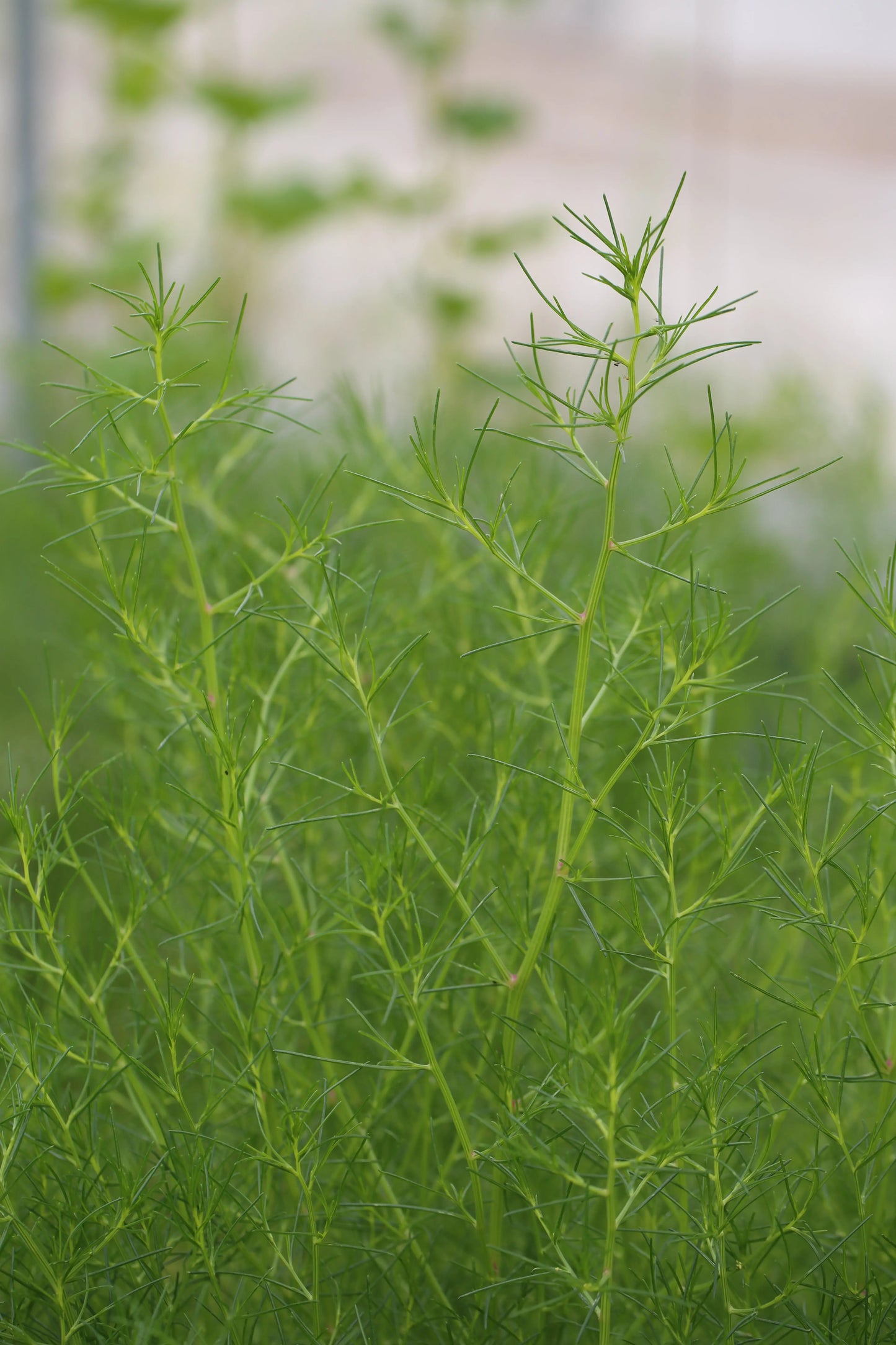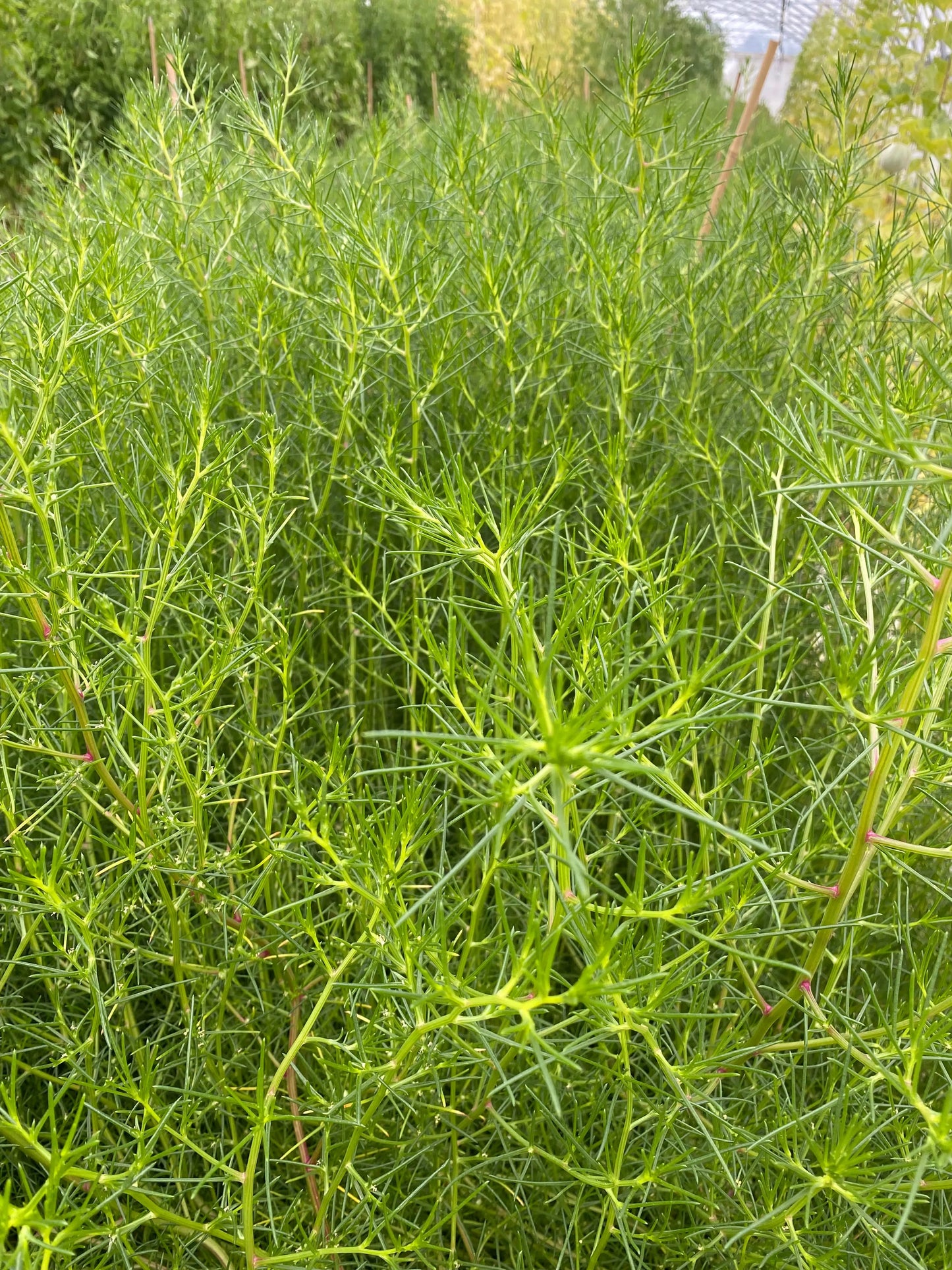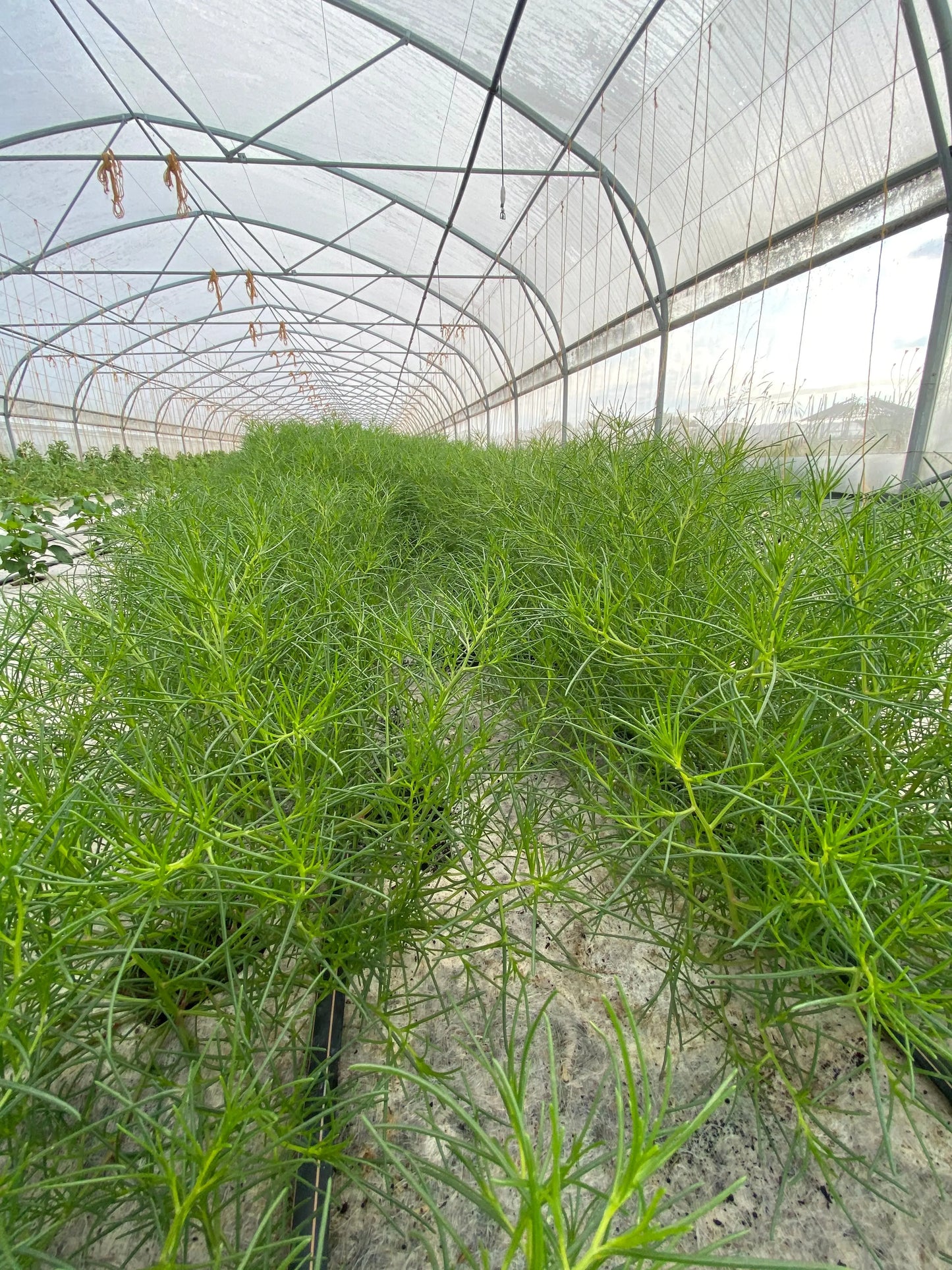JAPANESE SALICORN AB
Salsola komarovii
A plant native to the salt marshes of the northern coasts of China, Korea, and Japan, reaching about 40 cm in height and flowering when the days become shorter. Several harvests are possible, it is picked as young shoots after 2 to 4 weeks, or more developed, about 5 to 10 cm high in 6 to 8 weeks. The young stems with their salty flavor and crunchy texture are eaten blanched, preserved in vinegar, but also raw. Used for a very long time in Japan (under the name Okahijiki), in sushi, in salads, or as a side dish.
Sowing Japanese samphire
Sowing: in spring or autumn, at 18-20°C, in a sandy, basic substrate. Do not heat your seed tray. Germination in good conditions: 35% in approximately 15 days.
Growing in open ground or in pots
Grow in open ground or in pots.
Exposure: sunny.
Soil: sandy and well drained.
Watering: preferably with salt water, concentration around 5 g/litre, but this is not obligatory.
In hot summer regions: prefer a cooler spring and autumn crop.
Cultivation possible in winter if there is no frost or under protection.
Features and Use
A cousin of our European samphire, native to the salt marshes of the northern coasts of China, Korea, and Japan, Japanese samphire reaches about 40 cm in height and flowers when the days get shorter. Several harvests are possible, samphire is picked in young shoots after 2 to 4 weeks, or when it is more developed, about 5 to 10 cm high in 6 to 8 weeks. Just like European samphire, the young stems with their salty flavor and crunchy texture are eaten blanched, preserved in vinegar, or raw. Its richness in minerals and vitamins and its salty taste have made it an ingredient used for a very long time in Japan (under the name Okahijiki), in sushi, salads, or as a side dish.
Try it blanched in a salad, seasoned with an Asian-style soy sauce vinaigrette and sprinkled with toasted sesame seeds.











